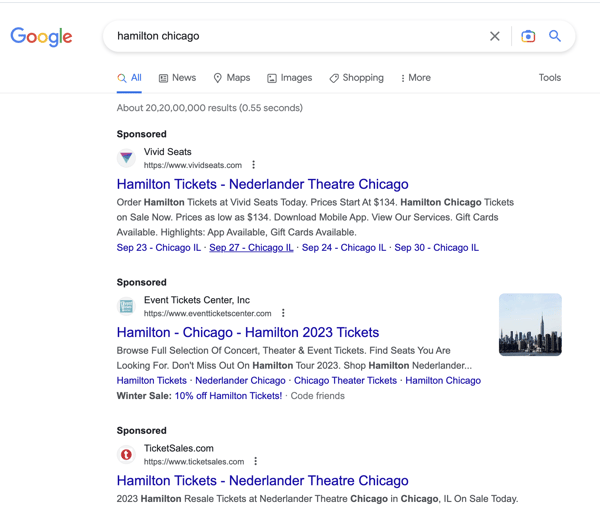July 16, 2025
 by Soundarya Jayaraman / July 16, 2025
by Soundarya Jayaraman / July 16, 2025

Your website is live. Your product is solid. But the traffic? Crickets.
Sound familiar? You’re not alone. In 2025, getting people to visit your website isn’t as simple as it used to be. Between Google’s zero-click answers, AI summaries, and infinite scroll feeds, more users are finding what they need before they ever click a link.
So, if you’re just “showing up” online and hoping for the best, that’s not going to cut it. You need to actively attract the right people and give them a reason to stay.
Whether you’re a small business owner doing everything yourself, a SaaS founder trying to build a pipeline, or a marketer tasked with scaling growth on a tight budget, the challenge is the same: how do you turn your website into a growth machine?
In this guide, I’ll walk you through proven website marketing strategies that actually work in 2025, along with the marketing tools that can help you put them into action.
| Website marketing strategy | Goal | Best for |
| Search engine optimization(SEO) | Drive long-term, high-intent organic traffic | Businesses with existing search demand and long sales cycles (example, SaaS, services, niche ecommerce, publishers) |
| AEO/GEO/LLM optimization | Show up in AI search and chatbots | All online brands looking to appear in AI-generated answers. |
| Content marketing | Attract, engage, and educate website visitors | Businesses that rely on organic traffic, thought leadership, or educational marketing, like B2B SaaS, agencies, marketplaces |
| Email marketing | Nurture leads and retain visitors | Any business with a lead list or repeat customers like ecommerce, SaaS, media, or local services |
| Social media marketing | Build awareness and stay top of mind | Brands targeting consumers or professionals directly like DTC brands, retail and ecommerce shops, B2B SaaS |
| Paid advertising | Drive immediate, targeted traffic | Businesses launching new products, running campaigns, or needing fast visibility like ecommerce brands, early-stage startups |
| Affiliate marketing | Scale referrals with minimal upfront cost | Ecommerce, SaaS, course creators, and digital product sellers |
| PR and earned media | Build authority and expand reach | Startups, personal brands, product launches, and mission-driven companies |
| Online communities | Be in spaces your audience already participates | Brands serving engaged or technical audiences like software tools, wellness, gaming, creator economy |
| Review and reputation management | Show social proof support buying decisions | Service businesses, SaaS vendors, ecommerce brands, and local providers |
| UX and CRO | Improve conversions without increasing traffic | Any business with traffic but low engagement or signups like SaaS, DTC, or lead gen sites |
These are practical, repeatable tactics that help you attract qualified visitors, boost engagement, and turn passive browsers into paying customers.
Before you dive into SEO, content calendars, or ad campaigns, it’s critical to build a strong foundation. A successful website marketing strategy starts with deep alignment across your product, business goals, and audience, not just keywords or design choices.
Selecting the right website marketing strategy isn't limited to tangible resources, content, and design of your website. It requires you to understand your prospective market size, product fit, and business model in detail.
Here’s what you need to lock in before executing any tactics:
Once your goals, audience, and messaging are in place, it’s time to execute. The following website marketing strategies are designed to help you attract the right visitors, engage them meaningfully, and convert them into loyal customers.
These tactics aren’t just trends. They’re repeatable, scalable, and aligned with how people discover and interact with websites in 2025.
Search engine optimization (SEO) is the process of improving your website’s visibility in organic search results. It involves optimizing content, structure, and technical elements so your site ranks higher when people search for relevant keywords on Google and other search engines.
It’s not about gaming the algorithm. it’s about helping search engines understand and surface your content when it matters most.
Despite the rise of AI answers and zero-click results, search is still one of the highest-intent marketing channels out there. When someone types a query into Google, they’re actively looking for something. If your site appears in that moment, you’re already one step ahead.
SEO also:
A strong SEO strategy rests on three pillars:
If you operate in a specific geographic region or have a physical presence, creating a Google Business Profile (formerly Google My Business) can boost your local SEO. It helps you appear in map packs, local queries, and “near me” searches, even before users click through to your site.
If you are a SaaS brand, don't stop there. Set up your profile for free on G2, the world's largest software marketplace, to get in front of millions of software buyers.
Here are some SEO tools to get you started:
It depends. SEO is a great place to start when you need long-term growth and have time and resources, as it can take three to six months to see results.
If you need fast results or you're launching something new, start with faster channels and build SEO in parallel.
This strategy goes by many names, like answer engine optimization (AEO), generative engine optimization (GEO), or just LLM optimization. No matter what you call it, the goal is the same: Optimize your website and content so it’s surfaced, cited, or referenced by AI-powered tools like Google’s AI Overviews, ChatGPT, Gemini, Perplexity, and Claude.
I'd say it’s still SEO but with an extra layer: making your content easy for machines to find, and understand not just humans.
“I found you through ChatGPT.” That’s something more marketers are hearing from buyers and leads today. More people are skipping traditional SERPs entirely and are asking questions directly inside AI tools and making decisions without clicking through to websites.
This strategy matters because:
There’s no rigid AEO playbook (yet), but early best practices include:
While AEO/GEO is still an emerging field, these GEO tools help brands track and improve how they're cited by AI-powered systems:
If I’ve said it once, I’ve said it a hundred times. Content is King. Your website needs to offer free, unique, and competitive content that brings in visitors and ranks well while also setting you apart from the competition. In the context of website marketing, this includes blog posts, landing pages, product comparisons, thought leadership, templates, and more.
The goal isn’t just to publish for the sake of it. It’s to create content that aligns with your customer’s journey and encourages them to take action..
Content is what powers everything else on your site, from SEO to lead generation to email nurture flows. High-quality content:
Here’s how to approach content marketing strategically:
Having the right categories of tools in place helps you stay organized, consistent, and measurable. Here are the types of tools that support a scalable, high-impact content workflow:
Email marketing is one of the most reliable and cost-effective ways to stay connected with your audience. It gives you direct access to people who’ve already shown interest in your brand, whether they subscribed to your newsletter, downloaded a resource, or signed up for a free trial.
Unlike social or search channels, email gives you control over the message, timing, and content. It keeps your brand top of mind and plays a major role in converting passive visitors into loyal customers. Done right, it’s a powerful retention and conversion tool. It’s also one of the highest ROI channels in digital marketing.
It helps you:
Here’s how to build an effective email marketing strategy:
For an effective email marketing setup, consider tools across these categories depending on your needs:
Explore the top-rated tools in these categories on G2 to build an email stack that fits your business model and audience size.
Gone are the days when social media is just for your friends to show off pictures of their vacation or their newborn baby. Over 5 billion people are using social media, and that number grows each year. Don’t miss out on an opportunity to convert those people into your customers.
Whether posting on TikTok, Instagram, Facebook, X, YouTube, Snapchat, LinkedIn, or a combination, social media is a great way to build your community. Social media marketing gives you:
A focused social media strategy typically requires support from the following tool categories:
Paid advertising is one of the fastest ways to drive targeted traffic to your website, especially when you're launching something new, validating messaging, or trying to boost high-performing content. Whether it’s through search, social, or display, paid ads give you control over who sees your offer, when, and where.
Essentially, you pay a fixed price for every click your ad gets on the search engine results page, with the goal of maximum conversions.

If you choose to use Google AdWords, there is no spending requirement, so that you can set your price to as little as $5 a month or as grand as $5,000 a month. No matter your budget, you need to aim for at least twice the amount of lead acquisition as your investment to receive the best ROI. Your ad, the offer, and the landing page the ad leads to must all work towards the same goal - converting customers.
For many businesses, paid is the difference between waiting and scaling. It
People trust people, not just brands. This strategy blends public relations, affiliate marketing, and review management into a unified play: letting other people validate your product on your behalf.
In 2025, third-party advocacy directly impacts how you're discovered and perceived across search, social, and AI-generated summaries. When buyers see others talking about you, whether it’s a creator on YouTube, a journalist in a trade publication, or a real customer on G2, it builds instant credibility.
To build meaningful third-party advocacy, combine earned visibility, reputation management, and strategic partnerships with influencers or affiliates.
Here’s how to make it work:
You’ll need tools to manage relationships, track performance, and scale your affiliate program smoothly.
Your audience is already having conversations about your category, often in spaces like Reddit, Slack groups, Discord servers, LinkedIn communities, or niche forums. Showing up and participating in these online communities allows you to build credibility, surface insights, and create traffic opportunities that feel natural, not forced.
Today, community engagement has become a powerful way to drive brand awareness, content discovery, and long-term loyalty, without relying on ads or algorithms.
Participating in relevant communities extends your reach beyond traditional channels.
Community engagement backfires if not done with right intention of genuinely helping the members. So, lead with contribution, not promotion. Focus on helping, not selling. It pays off in long-term.
These tools can help you discover, manage, and scale your community engagement efforts.
Among online communities, Reddit has become a go-to for product research, and peer validation recently. With Google and LLMs surfacing Reddit threads, smart brands are showing up where users ask questions, share frustrations, and compare tools.
But Reddit isn’t a billboard it’s a conversation. To stand out, you need to participate like a person, not a marketer.
Here are some best practices on Reddit marketing and community engagement:
You’ve worked hard to drive traffic to your website. Now it’s time to make that traffic count. User experience (UX) and conversion rate optimization (CRO) ensure that when visitors land on your site, they can easily find what they need, and take meaningful action.
This isn’t about flashy design. It’s about clarity, speed, and reducing friction at every step of the user journey.
Good UX and CRO help you get more value out of every visitor without increasing ad spend.
Small tweaks in UX can lead to major gains in conversions, especially when backed by data.
These tools help you analyze user behavior, test variations, and make informed design decisions.
Website marketing isn’t “set it and forget it.” The best-performing strategies evolve over time, based on what the data tells you. Tracking performance helps you understand where your traffic is coming from, how people behave on your site, and what actually drives results, so you can scale what works and fix what doesn’t.
Optimization isn’t just about metrics. It’s about making better decisions, faster.
Without tracking, you’re guessing. With it, you’re compounding your impact. Tracking
Set clear goals, measure against them consistently, and turn insights into action.
These tools help you measure, analyze, and optimize every aspect of your website marketing strategy. You can use a combination of already mentioned software like
The 12 core strategies we’ve covered lay a strong foundation for driving traffic, building trust, and converting users, but depending on your business model, growth stage, or audience, additional tactics can help you scale faster or stand out in saturated markets.
Here are a few worth exploring:
Programmatic SEO involves creating hundreds or thousands of optimized pages at scale using structured data. It’s particularly effective for marketplaces, aggregators, SaaS tools with integrations, or any business that can template content based on location, features, or use cases. Just make sure quality and user intent stay at the center.
Another tactic here is translating and localizing your website for specific regions, if you're targeting global audience.
Quizzes, calculators, free tools product finders, and comparison tools not only engage visitors. They increase time on site and encourage sharing. If your audience needs help making decisions, interactive experiences can guide them and move them closer to conversion. They're also great for lead generation and differentiation.
Not every buyer is ready to convert on the first visit and not every question is answered on your landing page. That’s where conversational marketing comes in.
Deploy AI chatbots or live chat on high-intent pages like pricing or demo requests to engage visitors, answer questions, and qualify leads in real time. Integrate with your CRM, personalize conversations based on behavior, and continuously track performance to optimize engagement and conversions.
This approach works especially well for businesses with longer sales cycles, high-ticket products, or complex offerings that require more explanation.
Need a starting point? Don’t feel pressured to do it all at once. Use this quick-start template to design a focused website marketing strategy based on your goals and resources:
No one-size-fits-all. But the right mix, executed consistently, can turn your website into your most powerful marketing asset.
You can promote a website through a mix of strategies including SEO (to rank on search engines), social media marketing, email newsletters, paid ads (Google, Meta, etc.), content marketing (blogs, videos, tools), influencer or partner collaborations, and launches on platforms like Product Hunt or Reddit. The best results come from combining multiple channels based on your audience and goals.
The fastest way to drive traffic to a new website is to run paid ads (Google, Meta, TikTok) and promote on social media (LinkedIn, TikTok, Reddit, Product Hunt). Pair this with influencer or newsletter partnerships for quick, targeted exposure.
Most businesses see results in 3–6 months, but it depends on competition, domain authority, and execution quality.
Yes, but only if it’s original, structured, and optimized for both human readers and AI summarizers.
Yes. You still need to market your website even if you have social media. Social platforms drive awareness, but your website is where conversions, SEO growth, and long-term brand authority happen.
Also, your website is your owned asset. Social media platforms change algorithms, but your site is always under your control. Marketing your site ensures you're not dependent on algorithms and builds a more sustainable, owned digital presence.
Yes, you can market a website with no budget by leveraging organic strategies like SEO, social media, Reddit, and forum engagement, content marketing (e.g., blogs or videos), and launching on platforms like Product Hunt. Consistency, value-driven content, and tapping into communities where your audience hangs out are key to gaining traction without spending money.
Yes, but with human oversight. Use AI for ideation, outlines, or rough drafts, then refine with your expertise and brand voice.
By now, you’ve seen just how many ways there are to market a website and how different the path can look depending on your business, your goals, and your audience.
You don’t have to do everything. What matters is starting with a few high-impact strategies that fit where you are now and building from there. Whether that’s SEO, email, community, or paid ads, the right approach is the one that helps real people find, trust, and choose you.
Your website is where those decisions start. Make it useful. Make it clear. Make it worth coming back to. Because great marketing doesn’t just bring people in. It keeps them coming back and brings the right ones with them.
Your website is up and live. Now what? Ensure you never lose sight of your branding initiatives and be a top consumer choice by tracking website KPIs.
This article was originally published in 2019. The content has been updated with new information.
Soundarya Jayaraman is a Content Marketing Specialist at G2, focusing on cybersecurity. Formerly a reporter, Soundarya now covers the evolving cybersecurity landscape, how it affects businesses and individuals, and how technology can help. You can find her extensive writings on cloud security and zero-day attacks. When not writing, you can find her painting or reading.
AI is no longer just helping B2B buyers; it’s making decisions for them.
 by Alexandra Vazquez
by Alexandra Vazquez
Today, video content is driving the internet.
 by Harpreet Munjal
by Harpreet Munjal
LinkedIn’s primary purpose is to connect business professionals all across the world.
 by Alexa Drake
by Alexa Drake
AI is no longer just helping B2B buyers; it’s making decisions for them.
 by Alexandra Vazquez
by Alexandra Vazquez
LinkedIn’s primary purpose is to connect business professionals all across the world.
 by Alexa Drake
by Alexa Drake


